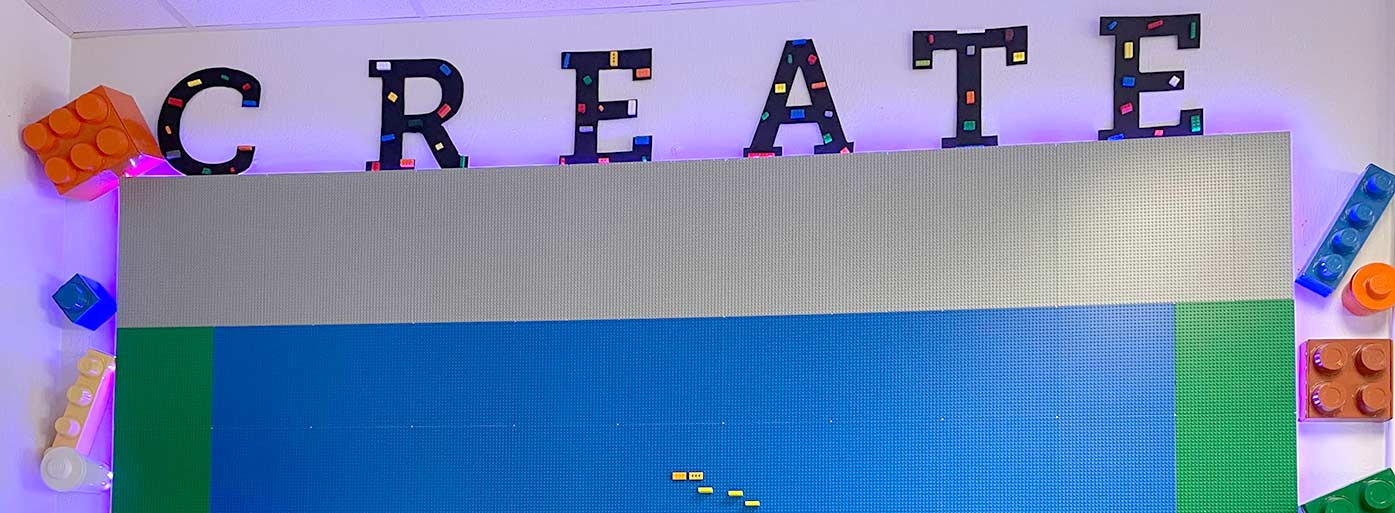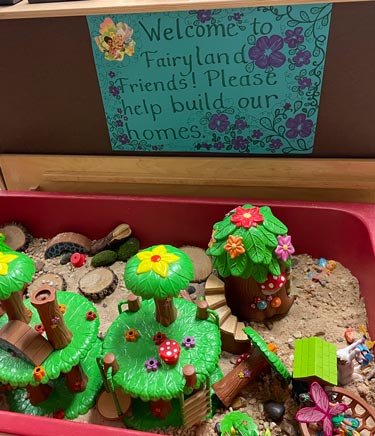Research-Based Best Practices for School Readiness in Prekindergarten Classrooms
A key to developing effective practices for promoting school readiness in the prekindergarten classroom is the integration of research-based instructional practices, each known to be important to young children’s learning and development.
Using the key elements of developmentally appropriate practice and building a high-quality prekindergarten PK3 and PK4 program includes:
- Use of consistent strengths-based, play-based learning experiences
- Content that builds linguistic, cognitive, and social skills known to predict school readiness
- Planning that takes advantage of recent brain research for memory development
- A balance of teaching strategies and teacher led/child led opportunities
- Flexible groupings of children for learning activities, including one-to-one time, small groups, and large groups
- Ensuring all activities are developmentally appropriate and do not include the use of worksheets
Power of Play
The research behind “play” supports the benefits of the development of the whole child across cognitive, communicative, social, physical, and emotional domains. In addition, play supports the formation of the safe, stable and nurturing relationships with adults and peers that children need to thrive (American Academy of Pediatrics 2018) . The “Power of Play” explains the play continuum (White 2012) :
- Play is enjoyable: brings joy to the child
- Play is intrinsically motivated: no extrinsic motivated function or goal
- Play is process-oriented: means are more important than the ends
- Play is freely chosen: spontaneous and voluntary
- Play is active engagement: being actively engaged physically and mentally
- Play is non-literal: involves make-believe
Play gives children the opportunity for growth in direct and indirect ways. Children learn and practice cognitive skills, executive functioning skills, language and communication skills, problem solving skills, self-regulation, and creativity. Play also contributes to the development of fine and gross motor skills. Here are the types of play children can engage in:
- Solitary play (2 – 2½ years): The child plays alone.
- Parallel play (2½ – 3½ years): Children may be engaged in similar activities, but they play separately.
- Associative play (3½ – 4½ years): Children are playing separately but may share, pay attention to others, and/or communicate with others about their play.
- Cooperative play (4½ years): Children are engaged in play with a common goal, and they work cooperatively to achieve the goal.
- Guided Play: An adult facilitates or engages in play or intentionally sets up the environment for play (e.g., by using open-ended questions, prompts, modeling) (Skene, et al. 2022)
- Object Play: playful manipulation of objects
- Pretend Play: alternate realities of the real world (play schema)
- Physical Play: locomotor or exercise play
- Media Play: monitored digital play where children are able to practice a variety of skills
Zone of Proximal Development
Lev Vygotsky, a leading researcher in child development, considered imaginative play as an activity that provides children with experience in the zone of proximal development (Vygotsky 1978). This theory explains the difference between what children can and cannot do by themselves. Under the rules of play, children can function within their existing level of development which also sets up the understanding that an object can represent the meaning of another object (e.g., block as a phone) which helps to extend learning and understanding. Ideally, people interacting with children should initially guide most of the problem-solving process and eventually transfer this responsibility to the child for maximum independent development through learning, such as through play schemes.
Differentiated Instruction
Vygotsky’s theory of child development also includes the notion of using ‘scaffolding’, as a form of instruction. This is a process by which the educator adjusts the amount and type of support offered and expands the depth of understanding to the child so that it fits with the child's learning needs over the course of the learning interaction (Vygotsky 1978). In scaffolding, the teacher gradually reduces the amount of support as the child becomes more skilled, so that eventually the child can execute the task independently.
The following are examples of differentiated instruction, such as scaffolding, educators can use:
- Being proactive in planning lessons that are accessible to all students
- Focusing on quality of the activity over quantity of tasks
- Using assessment data as a key factor in determining quality instruction
- Focusing on being child centered
- Providing instruction through whole group, small group and one-on-one time
- Taking multiple approaches to learning
- Content- what they learn
- Process- how they learn it
- Product- how they demonstrate what they have learned
Gradual Release Model in ECE Classrooms
A theory model based on a problem-solving process is referred to as the gradual release of responsibility. This theory includes transferring the responsibility from the adult to the child (Pearson and Gallagher 1983).
- I DO-Teacher models, demonstrates, and thinks out loud (e.g., teacher selects two pictures that rhyme and discusses her choice with the students).
- WE DO-Child does task. The teacher helps (e.g., students are chosen to select pictures that rhyme and discuss their choice with the class).
- YOU DO- Child completes task independently (e.g., in small group, children use rhyming puzzle pieces to sort out pictures that rhyme).
This model encourages the learner to follow through with their level of understanding through individual representation based on the model presented by the educator. This also gives the teacher an opportunity to check for understanding, differentiate instruction and re-teach, as necessary.
References
American Academy of Pediatrics. 2018. The Power of Play: A Pediatric Role in Enhancing Development in Young Children. Pediatrics 142 (3).
Hirsh-Pasek, K., Golinkoff, R. M., Berk, L. E., and Singer, D. G. 2009. A Mandate for Playful Learning in Preschool: Presenting the Evidence. Oxford: Oxford University Press.
Pearson, P. D., and M. C. Gallagher. 1983. “The Instruction of Reading Comprehension.” Contemporary Educational Psychology 8:317–44.
Skene, K., C. O’Farrelly, E.M. Bryne, N. Kirby, E.C. Stevens, and P.G. Ramchandani. 2022. Can guidance during play enhance children’s learning and development in educational contexts? A systematic review and meta-analysis. Child Development 93 (4): 1162-1180.
Tomlinson, Carol Ann. 2017. How to Differentiate Instruction in Academically Diverse Classrooms. Alexandria, VA: ASCD.
Vygotsky, Lev. 1978. Mind in Society: The Development of Higher Psychological Processes. Cambridge: Harvard University Press.
White, Rachel E. 2012. The Power of Play: A Research Summary on Play and Learning. Accessed October 11, 2022.







